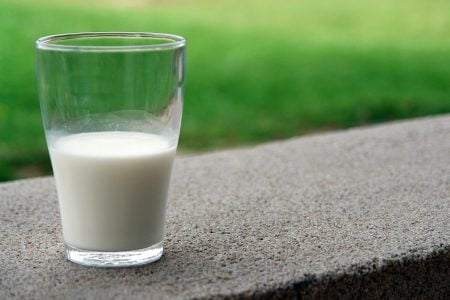Tips For Cooking and Eating Out While Maintaining Your Lactose Free Diet Plan
- Updated on: Apr 15, 2024
- 3 min Read
- Published on Feb 4, 2023

Lactose intolerance is a condition in which the body is unable to properly digest lactose. A kind of sugar that is found in milk and other daily products. Lactose intolerance occurs when there is a deficiency of the enzyme called lactase which is responsible for breaking down lactose in small intestines. Lactose is not properly broken down, you can experience symptoms such as gas, bloating, diarrhea and stomach cramps.
Lactose intolerance is generally not considered a serious condition however it can significantly affect the quality of life of people who suffer with it. Doctors generally recommend a lactose free diet for such patients in order to manage symptoms and avoid any kind of discomfort. This means you may have to avoid foods that contain lactose or milk or other daily products as ingredients. It is worth to note that some people with lactose intolerance may still consume small amounts of lactose without having to bother about its symptoms.
You should consult with a health care professional before starting a lactose free diet because there might be some other conditions that can mimic lactose intolerance symptoms. Your health care professional will help you determine if a lactose free diet is the right choice for you and will provide you appropriate guidance to maintain your health.
A lactose free diet can help you improve your gut health by reducing inflammation as well as help you in weight management and reduce the risk of certain diseases such as osteoporosis, type 2 diabetes, certain types of cancer.
Cooking at Home
It might be a bit challenging for you to adhere to a lactose free diet while you cook at home. One of the most important things you should keep in mind that there are many alternative options for common dairy products such as milk, cheese, and butter that contain lactose. You may use lactose free milk, almond milk, soy milk, rice milk if you experience lactose intolerant symptoms. You can use lactose free cheese that is available in the market or vegan cheese alternatives instead of the normal cheese. You can use margarine or olive oil instead of butter.
You might choose many traditional recipes that are suitable alternatives for lactose based traditional recipes. Examples of some delicious recipes that are lactose free include lasagna, dairy free mac, and cheese, and lactose free ice cream. While purchasing ingredients from grocery stores or other supermarkets. You should read the labels carefully and identify if any lactose based ingredients are contained in the products.
Eating Out
Eating out while adhering to a lactose free diet will be a bit tricky but it’s definitely possible. It’s recommended to choose restaurants that offer lactose free options on their menu. Be clear about your dietary preferences and restrictions to the kitchen staff when you visit a restaurant.
Some restaurants have separate allusion friendly or gluten friendly menus available, so you should check about them when you visit a restaurant.
Fast food options can be a bit challenge but there are chains available that offer lactose free options. When you are traveling it can be even more difficult to find lactose free options but it’s still possible. You should conduct a thorough research ahead of your travel and look for restaurant options that offer alternatives suitable for your dietary requirements.
It’s also important to keep in mind that it’s okay to sleep up and have a bit of lactose occasionally but try to make it a rare occurrence. You should remember that sticking to a lactose free diet can have many benefits for your health if you are suffering from lactose intolerance.
If you do a little bit of planning and communication, eating out while adhering to a lactose free diet can be certainly manageable. There is no need to be scared about and just go ahead to seek help or talk about your dietary requirements.












